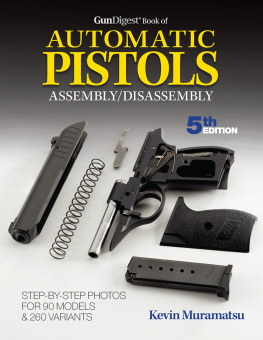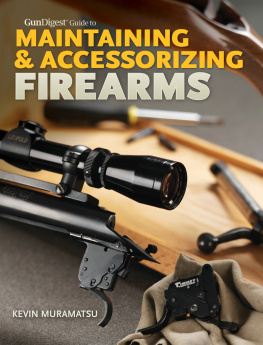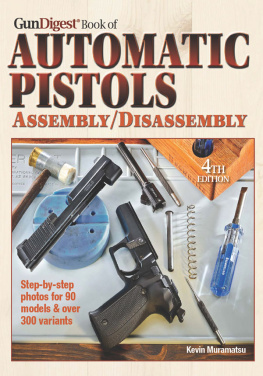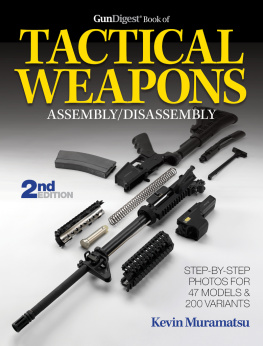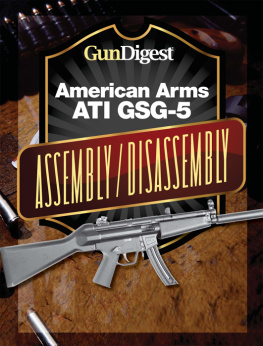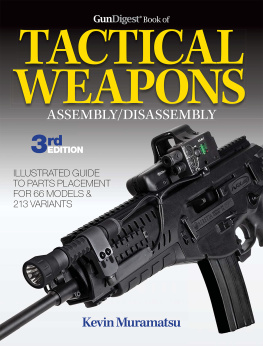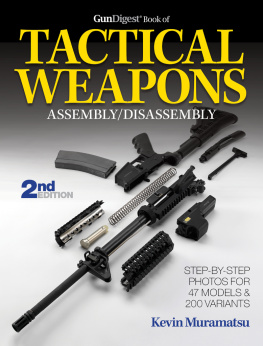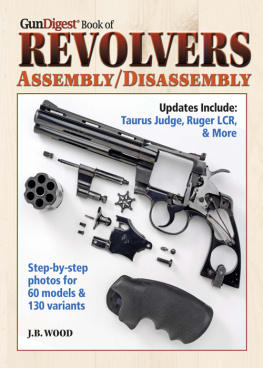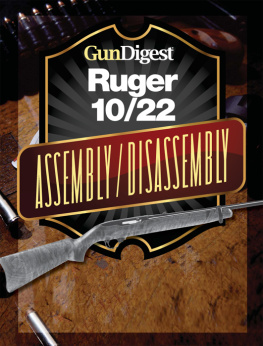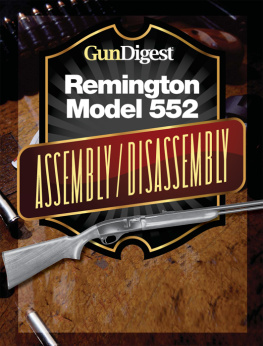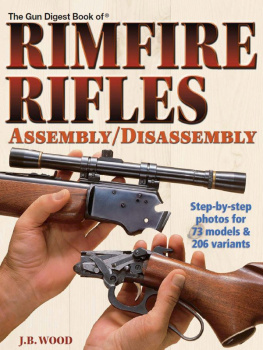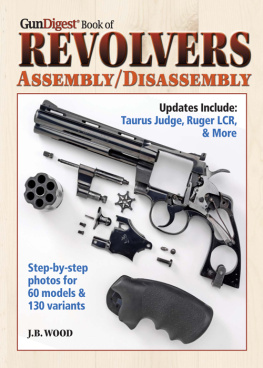Thank you for purchasing this Gun Digest eBook.
Sign up for our newsletter and receive special offers, access to free content, and information on the latest new releases and must-have firearms resources! Plus, receive a coupon code to use on your first purchase from GunDigestStore.com for signing up.
or visit us online to sign up at
http://gundigest.com/ebook-promo
Preface
This book is the final volume in the Assembly/Disassembly series of manuals from Gun Digest. It is final only in that it was the last of the originals to be published, and is coincidentally the last of the originals to be revised. This second revision (third edition) adds to the initial batch, expanding the previous edition with the addition of 128 pages of new material.
The word tactical is one of those things that can have multiple, subjective meanings. For our purposes here, it refers to firearms that might be used in law enforcement or by non-police for personal defense. As such it contains rifles, shotguns, pistols (including some concealable models), and even a few C&R machineguns. Those who wish access to such takedowns with more modern machineguns are, well, pretty much out of luck. Fortunately a number of the inclusions here are identical to their fully automatic counterparts, with the exception of the absence of the happy switch.
This time around sees the addition of several bolt-action rifles to the mix. Since the last revision, suitable new shooting disciplines, the largest of which is probably PRS or precision rifle shooting, have arisen that tend to emphasize the use of accurate 6mm to .30 caliber rifles. There is a pretty good split between bolt actions and high-end semi-autos for this sport. Ironically, the things that make a good long-range target rifle are also the things that make a great sniper rifle, justifying the inclusion of these rifles in this book. Bolt rifles are tending to aluminum chassis systems rather than traditional wood or composite stocks, though not entirely. This can be seen in the contrast between the Savage 110 BA, a heavy all-metal unit with a mostly non-adjustable trigger, and the Steyr SSG-04, a more traditional-looking rifle that possesses a fantastic trigger with no less than five adjustment points for weight, engagement, and overtravel. Though it should be noted that the aluminum chassis are getting lighter and more minimized to reduce weight, as is evident in the examples from MPA and Weatherby. Of course new civilian versions of rifles developed for the militaries of the world (MSRs) are present. There is overall a good mix of rifles, pistols, and shotguns added this time around.
Pistols are getting bigger, as there are a number of models that are merely shortened versions of rifles, represented here by the CZ Bren and Scorpion entries.
Although it may be noted in the individual texts, there are some firearms, notably the AR-15 and 1911, which have been copied so much its impossible to list all the manufacturers or incarnations in which they have appeared. It can be taken for granted that if it looks convincingly like one of those guns, it probably is (or 90% is) that gun, and the take down steps will mostly apply.
To some degree, a magazine is a magazine is a magazine. The vast majority of magazines are constructed in the very same fashion and so there are only a few magazines specifically addressed with their parent firearms. Pay attention to the Tools section found a few pages in. It cannot be overstressed that the appropriate tools be used, not just any old thing lying around. I highly advise using a digital camera to take photos (or multiple photos) of each step of your disassembly. It is very difficult for an author to take as many photos as he would like for each of these steps. There simply isnt enough space in the allotted pages to fit that many pictures. So it is recommended that, when the reader of this manual goes about the process of disassembling one of the guns in this book, (s)he take multiple pictures at each step along the way. There is no downside to this and there could be a very tangible upside.
Before you start playing around the guts of a gun, ensure that the thing is completely unloaded. This obligatory warning has been omitted from each entry to avoid having to write it forty times. Triple check the gun, especially the chamber, and that the magazine is not present in the gun and is itself empty of cartridges.
Have fun, and get out and shoot. The more the better, and even better with friends or liberals.
Kevin Muramatsu,
WBT, MN
Contents
Tools

Countless firearms, old and new, bear the marks, burrs and gouges that are the result of using the wrong tools for taking them apart. In the interest of preventing this sort of thing, I am including here a group of tools that are the best types for the disassembly of shotguns. Except for the few shop-made tools for special purposes, all of those shown here are available from one of these sources.
Brownells Inc.
Route 2, Box 1,
200 S. Front St.
Montezuma, Iowa 50171
B-Square Company
P.O. Box 11281
Fort Worth, Texas 761092
General Instructions:
Screwdrivers: Always be sure the blade of the screwdriver exactly fits the slot in the screw head, both in thickness and in width. If you dont have one that fits, grind or file the tip until it does. You may ruin a few screwdrivers, but better them than the screws on a fine shotgun.
Slave pins: There are several references in this book to slave pins, and some non-gunsmith readers may not be familiar with the term. A slave pin is simply a short length of rod stock (in some cases, a section of a nail will do) which is used to keep two parts, or a part and a spring, together during reassembly. The slave pin must be slightly smaller in diameter than the hole in the part, so it will push out easily as the original pin is driven in to retain the part. When making a slave pin, its length should be slightly less than the width of the part in which it is being used, and the ends of the pin should be rounded or beveled.
Sights: Nearly all dovetail-mounted sights are drifted out toward the right, using a nylon, aluminum, or brass drift punch.

The tiniest of these fine German instrument screwdrivers from Brownells is too small for most gun work, but youll see the rest of them used frequently throughout the book. There are many tight places where these will come in handy.
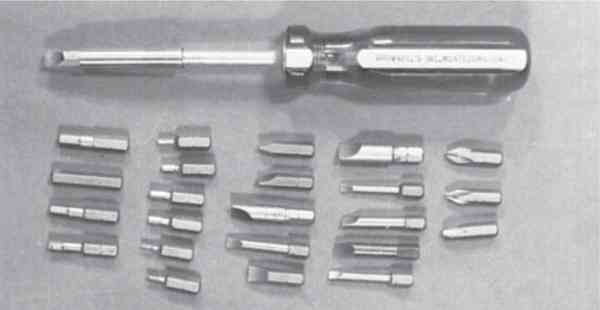
When a larger screwdriver is needed, this set from Brownells covers a wide range of blade sizes and also has Phillips- and Allen-type inserts. The tips are held in place by a strong magnet, yet are easily changed. These tips are very hard. With enough force you might manage to break one, but theyll never bend.


